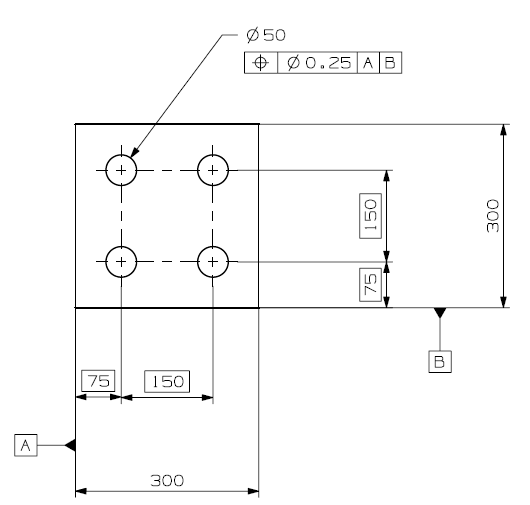Hi. I have a plain square plate of unknown exact size and I want to ensure that 4 holes on a 100x100 square pattern are positioned centrally and oriented correctly. How is this dimensioned/toleranced?
I've seen many drawings where plate centrelines will be marked and =100= dimensions are put between holes. Obviously this is dimensioning from virtual centrelines and is difficult to inspect.
How is it done 'properly' using GD&T?
Hobbs101
Mechanical Design Engineer
I've seen many drawings where plate centrelines will be marked and =100= dimensions are put between holes. Obviously this is dimensioning from virtual centrelines and is difficult to inspect.
How is it done 'properly' using GD&T?
Hobbs101
Mechanical Design Engineer

